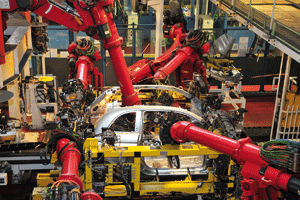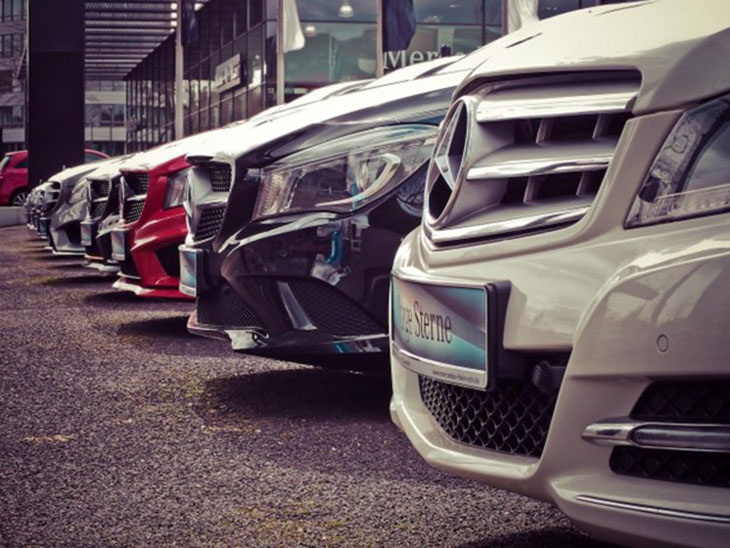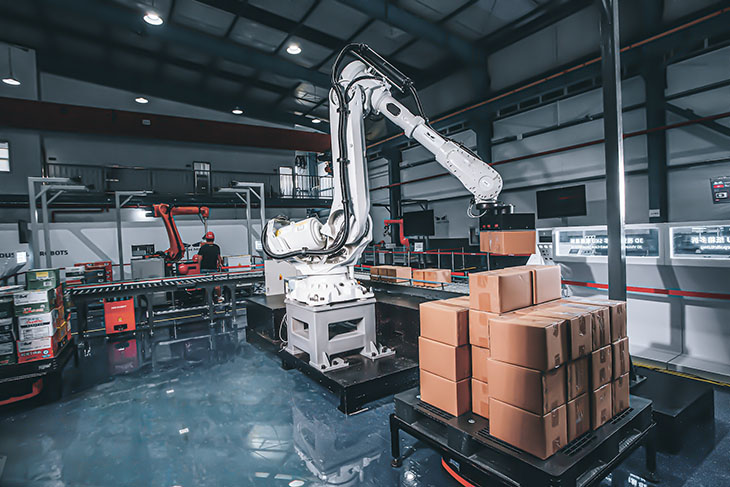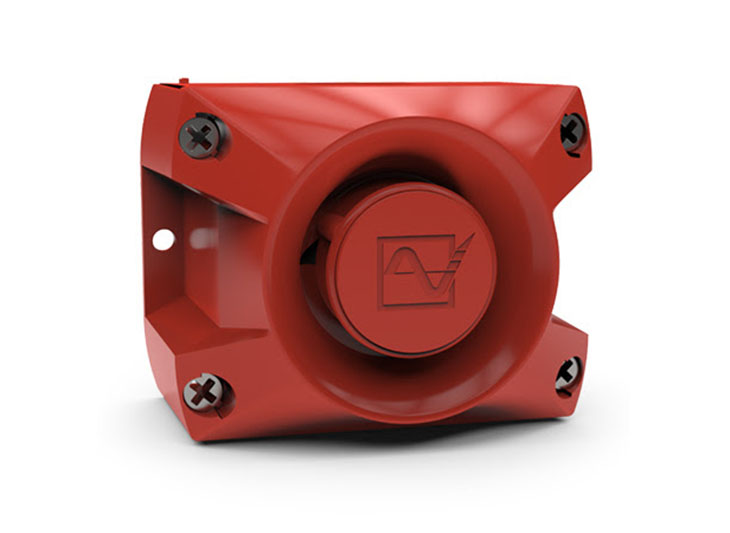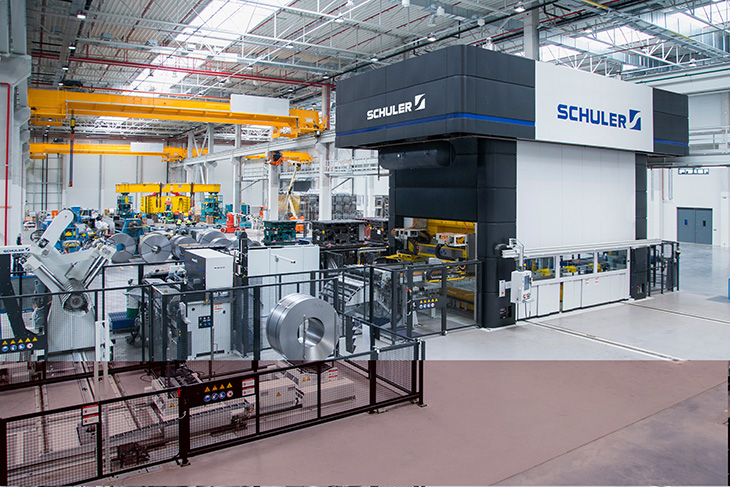Fiat Auto Poland was established in 1992, but it has made its presence felt on the Polish market for 89 years. Longstanding experience has obligated the company to maintain professional service and high quality of the vehicles.
Its dynamic development depends on innovative technology solutions ensuring driver and passenger comfort. The Tychy Factory, the largest automobile factory in Poland, the biggest Fiat factory in Europe and the second in the world after the Brazilian one.
Brief history
Trees with strong root systems can withstand any violent storm and grow high. Decades old tradition of the Italian automotive giant, FIAT, which is a historically recognized brand, and the quality of Polish Fiat Auto Poland go hand in hand. The popularity and success of Fiat are a result of building a good rapport with customers for years. The history of one of the carmaker forerunner in Europe started when the founding act of Fabbrica Italiana Automobili Torino was signed on 11 July, 1899. Giovanni Agnelli became a managing director then, and it was his dynamic personality and resourcefulness, which shaped the characteristic style and influenced the quality of future products. The first factory was opened at Corso Dante in Turin, in 1900. Before Turin became a home for the flourishing automobile industry, it was famous for the Shroud of Turin kept in the Cathedral of St. John the Baptist. Two other important plants built in later years were Lingotto, with a futuristic test track on its roof and Mirafiori, where cutting edge technology solutions were used. The latter was particularly important for Polish male citizens in 70s and 80s, who boosted their sense of self-respect by owning an inevitable attribute of success and professional position, Fiat 131 Mirafiori, whose name derived from the Turin factory. The car model gained extreme popularity, but prior to this craze, the cooperation between FIAT and Poland, did not always proceed smoothly because of the political inconvenience and economic crisis. During the pre-war period, Polski Fiat was a thriving company, which specialized in the production of Fiat Topolino, whose Italian nickname means Mickey Mouse, and Fiat 508, so called Balilla or 4’ door carriage, which earned customers’ trust as the best family car. However, the WWII stopped the winning streak, the factory was destroyed and its reconstruction was stretched over a long period of time. The cooperation with the Italian company was renewed in 1971, when the contract was signed to produce a small car, Fiat 126, in Poland. The selection was based on the simple design and cheap maintenance of the car, which was supposed to be available for an average Polish citizen. (wykreślone zdanie) The privatization process of FSM (small-car factory) started in 1990. As a result, three joint-stock companies emerged two years later, namely, Fiat Auto Poland S. A., Teksid Poland S. A. and Magneti Marelli S. A., which specialised in car, foundry and automotive component sectors. A new stage in the production of Fiat in Poland was sealed by the production of Cinquecento, a new model enthusiastically embraced by customers. Fiat Auto Poland took over FSM and reorganized the methods of management, work ethics and the quality of cars, which became a top priority for the company. Poland reinforced its position as a producer and controller of car assembly of small and large cars, Fiat Uno, Punto, Siena, Bravo, Brava, Marea, Ducato, Seicento, Palio Weekend, New Fiat Panda and Fiat 500 (also for Abarth company), to name but a few. FAP became also an exclusive importer of Lancia, Alfa Romeo and Abarth to Poland. As a result of an agreement between FIAT Group and Ford Motor Company in 2008, Poland was to produce a next-generation Ford Ka and Fiat 500. It was a challenge, which stimulated the development of the company and strengthened its leading position as the largest foreign investor and exporter in Poland. The foreign sales of cars produced in Tychy accounts for 3% of Polish exports and is a pride of the Polish automobile industry. Fiat Auto Poland S.A. produced a record-breaking number of cars in Tychy in 2009, i. e. 605 797, which is an improvement of 112 912 cars more than in 2008 (around /+ 22,9%).
Export hit and polish symbol of the 70s
Fiat 126p was consistently driving Syrena models out of business and became a long-awaited car for Polish drivers. Also foreign users took an instant liking to a cute and small Fiat 126p, nicknamed ‘maluch’. The car was exported to more than 30 countries, mainly to former Federal Republic of Germany, France and Great Britain, but also to Cuba, India and Australia. During 28 years, the design of small Fiat was improved and modified so that it would be more eco-friendly, less noisy and more convenient for physically challenged people. New models of Fiat were represented by Fiat 126p Face Lifting, featuring the system of a turn-key ignition, Fiat 126p Bis with the third rear door and water-cooled engine, Fiat 126 el with electronic ignition and without triangular windows and finally Fiat 126 elx Maluch with a catalytic converter. The last line of Maluch, available in yellow and red colour, was produced on September 22, 2000 and was named ‘Happy End Baby’.
Shower of awards
FIAT received a great number of accolades in the category of management, eco policy and quality of its vehicles. The most important are:
- ISO 9001 Quality Assurance Certificate in 1996;
- ISO 14001 Environmental Management System certification for the Body Plant in Tychy in 1999;
- ISO 9001:2000 and PN-N-18001 in 2002;
- The Polish Quality Award in 2004;
- FAP was recognized for excellence in 2005 in the European Quality Award Competition and it was the first awarded Polish company in this competition;
- Bronze Level Award for adherence to WCM standards in 2007;
- The top place for Fiat Panda in the category of city cars in ADAC’s 2008 reliability ranking;
- ‘Auto Lider 2008’ special award for FAP for its long-standing contribution to the development of Polish automotive industry and economy;
- Silver Level Award in 2009 from the WCM audit;
- BEST CARS 2009 award for Fiat 500;
- The first place for Fiat 500 in the reader poll ‘The Best Cars of 2009’ in the category of the smallest cars organized by a German magazine Auto Motor und Sport. The car won in 12 out of 17 countries, where the competition was announced;
- Car of the Year for Fiat Panda in 2004 and Fiat 500 in 2008.
‘Improving the environment is not a goal for the future, but something we can do right away...’
Along the lines of environmental protection and continuously increasing fuel prices, companies follow the strategy of sustainable development to win customers’ trust. FIAT Group, as the best-managed company, entered the prestigious stock market indexes DJSI World and DJSI STOXX, with a score of 90/100 compared with an average of 72/100 for all companies in the same sector. DJSI scrutinizes various indicators from three aspects, economic, social and environmental, according to the concept of sustainable development, which is a long-term goal for FIAT Group. Using new technologically-advanced engines, which reduce fume emission considerably is a key success indicator for FIAT. The company decreased carbon dioxide emissions to 129,1 g/km, which complies with the European requirements for 2015. Therefore, it is a leader among the brands, such as, Toyota, Peugeot, Citroen, Renault, Ford, Opel, Volkswagen, Audi or Mercedes. (wykreślona część zdania) Natural Power, which are bio power engines, take credit for these outstanding results. The MultiAir Technology is one of Fiat’s innovative solutions. The benefits of MultiAir engines are increase in power up to 10%, 10% reduction in fuel consumption and CO2 emissions, 60% reduction in NOx emissions, 40% reduction in HC/CO and enhancement in its operational flexibility. The new class of remarkable diesel engines, 1.6 and 2.0 Multijet is the second and improved generation of Common Rail diesel engines. Multijet system is a breakthrough in diesel technology as it provides multi-stage injection cycle of 3 to 8 openings during the final phase of power stroke and exhaust stroke, which ensures less combustion noise, reduction of exhaust emissions and improvement of parameters. Its high quality provides 35 000 km service intervals, which reduces vehicle maintenance cost. Furthermore, they meet the recent Euro 5 regulations for motor cars considering the emission of the ozone precursors and dust particles. Fiat Bravo is one of the first models which was equipped with Multijet 2.0 with DPF, which reduces the exhaust fumes considerably. Start&Stop systems, which are used by a large number of Fiat vehicles, ensure fuel efficiency, reduce exhaust pipe emissions and guarantee low cost of production. They operate by automatically turning off the engine during idling and starting it after releasing the clutch pedal. Impressive hands-free system Blue&Me, which was invented in the cooperation with Microsoft, enables a driver to use a mobile phone by giving voice commands. It has to be emphasized that the high-tech device does not have to be taught to recognize the timbre of a driver’s voice. Blue&Me system was integrated into various models of FIAT Group, whose users can take advantage of eco:Drive application, which monitors a customer’s style of driving and its influence on fuel consumption and fume emission. They can also be advised on how to modify their style of driving to lessen the exhaust fumes. Eco:Drive system is supposed to reduce the emissions of CO2 up to 15% and economize on fuel up to 120-200 euro. The programme can be downloaded for free from the official FAP website. FIAT is an unquestionable leader in the production of compact and eco-friendly cars. It offers two new products, namely, the LPG range of panda, Grande Punto and Bravo with bio-power engines and PUR-O2 line of Fiat 500, Croma and Bravo, with Start&Stop system and eco:Drive application, which will reduce fuel consumption, ecological tyres, less viscous oils, aerodynamic packages and longer ratio gearbox. Downsizing of gasoline engines is simultaneously introduced, as it leads to larger production of small-car segment, which provide plenty of power and have low combustion rates. The tendency to choose smaller cars over the larger ones is growing, as the former are easier to afford, cheaper to maintain and fuel efficient.
Written by Karolina Burkiewicz









